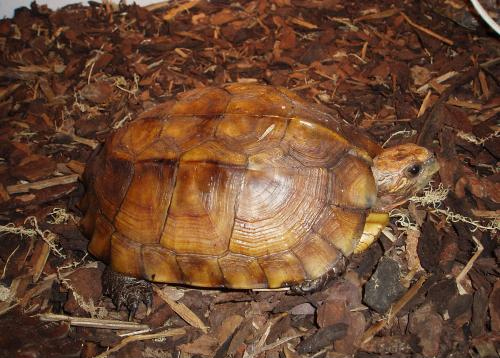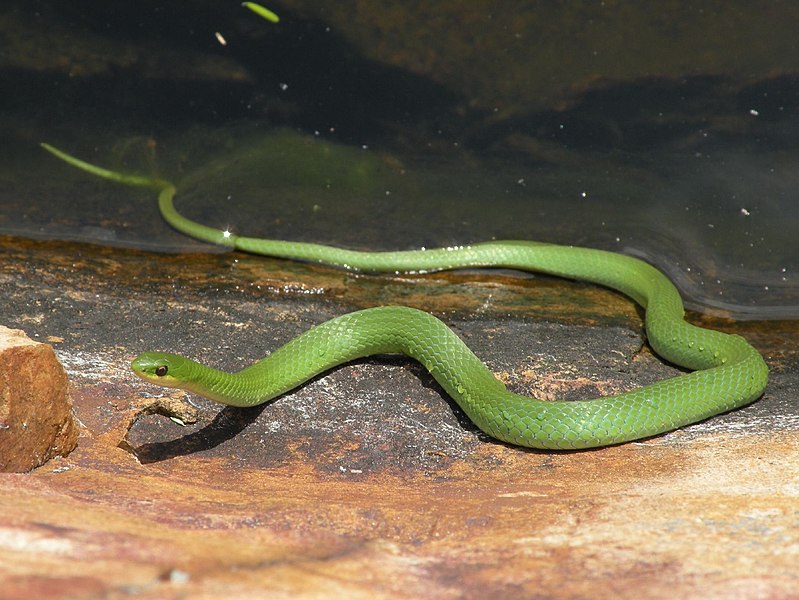 A recent announcement by the US Fish & Wildlife Service (US F&WS) has fueled rumors that the shipping of frog legs (please see photo) and the pet trade in live frogs and salamanders may soon be curtailed or banned. This is not actually the case, but there will soon be an opportunity for people to register comments concerning the trade with the US government. Read More »
A recent announcement by the US Fish & Wildlife Service (US F&WS) has fueled rumors that the shipping of frog legs (please see photo) and the pet trade in live frogs and salamanders may soon be curtailed or banned. This is not actually the case, but there will soon be an opportunity for people to register comments concerning the trade with the US government. Read More »
Something New for Insect-keepers – Sunburst and Green Diving Beetles – Part 1
 I cannot imagine why aquatic insects have not attracted more interest from invertebrate enthusiasts. Thousands of species, many of which are large and active by day, may be kept in relatively simple aquariums. Aquatic insect exhibits that I have established in zoos and museums are invariably very popular with visitors. From Dragonfly Larvae that flick out extendable “lips” to snare prey to Giant Water Bugs that can tackle small turtles, these other-worldly beings are fascinating to observe, and most are simple to collect. Today I’d like to cover the natural history of 2 species that are sometimes available in the pet trade, the Sunburst or Marbled Diving Beetle (Thermonectes marmoratus) and Green Diving Beetle (Thermonectes sp.). I’ll discuss their captive care in Part 2. Read More »
I cannot imagine why aquatic insects have not attracted more interest from invertebrate enthusiasts. Thousands of species, many of which are large and active by day, may be kept in relatively simple aquariums. Aquatic insect exhibits that I have established in zoos and museums are invariably very popular with visitors. From Dragonfly Larvae that flick out extendable “lips” to snare prey to Giant Water Bugs that can tackle small turtles, these other-worldly beings are fascinating to observe, and most are simple to collect. Today I’d like to cover the natural history of 2 species that are sometimes available in the pet trade, the Sunburst or Marbled Diving Beetle (Thermonectes marmoratus) and Green Diving Beetle (Thermonectes sp.). I’ll discuss their captive care in Part 2. Read More »
Breeding the Green (Plumed) Basilisk and Related Species – Part 1
We are quite fortunate that so attractive and interesting a lizard as the Green Basilisk (Basiliscus plumifrons) also breeds well in captivity. Two related species, the American or Brown Basilisk (B. basiliscus) and the Banded Basilisk (B. vittatus) may also be bred as described below. The fourth species in the genus, the Western Basilisk (B. galeritus) is not often kept or bred.
Enthusiastic Breeders
 Green Basilisks make things easy for their owners – unlike many reptiles, they seem not to need changing temperatures, rain or other environmental stimulation in order to come into breeding condition. Although reproduction is influenced by seasonal changes in the wild, well-nourished captives may breed year-round. In fact, it is important to monitor females carefully, as they may become egg-bound if unable to find a proper nesting site. Read More »
Green Basilisks make things easy for their owners – unlike many reptiles, they seem not to need changing temperatures, rain or other environmental stimulation in order to come into breeding condition. Although reproduction is influenced by seasonal changes in the wild, well-nourished captives may breed year-round. In fact, it is important to monitor females carefully, as they may become egg-bound if unable to find a proper nesting site. Read More »
The Keeled Box Turtle – a Hardy Species in Need of Captive Breeding – Part 2
 In Part 1 of this article we looked at the natural history of the interesting but little-studied Keeled Box Turtle (also known as the Jagged-shelled or Indian Thorn Turtle, Pyxidea mouhotii). Like many other turtles native to South and Southeast Asia, it is severely threatened by habitat loss and collection for the food trade, and would benefit from increased attention to captive reproduction.
In Part 1 of this article we looked at the natural history of the interesting but little-studied Keeled Box Turtle (also known as the Jagged-shelled or Indian Thorn Turtle, Pyxidea mouhotii). Like many other turtles native to South and Southeast Asia, it is severely threatened by habitat loss and collection for the food trade, and would benefit from increased attention to captive reproduction.
Keeping Keeled Box Turtles
Although little is known of their natural history, Keeled Box Turtles adjust well to captivity and soon lose their innate shyness. A pair I received as adults 20 years ago are still alive and well today at the Staten Island Zoo. Read More »
Rough and Smooth Green Snakes – Beautiful Insect-Eaters for Planted Terrariums – Part 2
 Please see Part 1 of this article for more on the natural history and care of Rough and Smooth Green Snakes (Opheodrys aestivus and O. vernalis).
Please see Part 1 of this article for more on the natural history and care of Rough and Smooth Green Snakes (Opheodrys aestivus and O. vernalis).
Heat
An ambient temperature of 70-76 F is ideal. A basking site of 80-85F should be available as well.
Light
There is some evidence that, in contrast to most snakes, Green Snakes benefit from exposure to UVB light. A moderate-output bulb, such as the Zoo Med 2.0 should be provided.
As with most diurnal animals, Green Snakes will also benefit from the provision of a UVA-emitting bulb (incandescent UVA bulbs will also provide heat for the basking site). Read More »
 That Reptile Blog – Reptile, Amphibian and Exotic Pet Care and Information
That Reptile Blog – Reptile, Amphibian and Exotic Pet Care and Information
